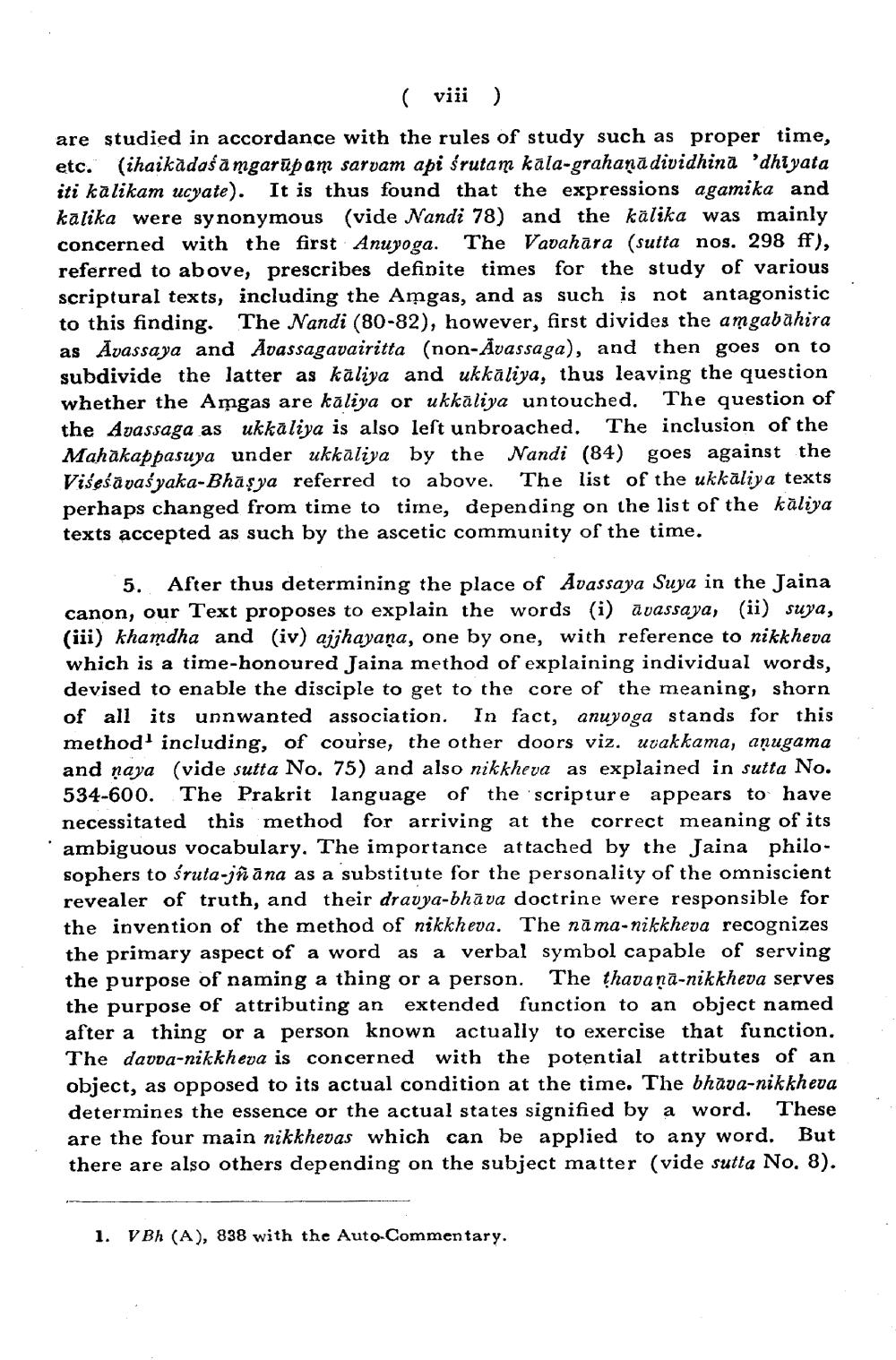Book Title: Agam 45 Chulika 02 Anuyogdwar Sutra Author(s): Nathmal Tatia Publisher: Research Institute of Prakrit Jainology & Ahimsa Mujjaffarpur View full book textPage 9
________________ ( viii ) are studied in accordance with the rules of study such as proper time, etc. (ihaikādaśāmgarūpam sarvam abi śrutam kala-grahanā dividhina 'dh iti kalikam ucyate). It is thus found that the expressions agamika and kalika were synonymous (vide Nandi 78) and the kalika was mainly concerned with the first Anuyoga. The Vavahara (sutta nos. 298 ff), referred to above, prescribes definite times for the study of various scriptural texts, including the Amgas, and as such is not antagonistic to this finding. The Nandi (80-82), however, first divides the amgabahira as Avassaya and Avassagavairitta (non-Avassaga), and then goes on to subdivide the latter as kaliya and ukkaliya, thus leaving the question whether the Amgas are kaliya or ukkāliya untouched. The question of the Avassaga as ukkaliya is also left unbroached. The inclusion of the Mahakappasuya under ukkaliya by the Nandi (84) goes against the Višeśavas yaka-Bhāşya referred to above. The list of the ukkaliya texts perhaps changed from time to time, depending on the list of the kaliya texts accepted as such by the ascetic community of the time. 5. After thus determining the place of Avassaya Suya in the Jaina canon, our Text proposes to explain the words (i) āvassaya, (ii) suya, (iii) khamdha and (iv) ajjhayana, one by one, with reference to nikkheva which is a time-honoured Jaina method of explaining individual words, devised to enable the disciple to get to the core of the meaning, shorn of all its unnwanted association. In fact, anuyoga stands method' including, of course, the other doors viz. uvakkama, anugama and naya (vide sutta No. 75) and also nikkheva as explained in sutta No. 534-600. The Prakrit language of the 'scripture appears to have necessitated this method for arriving at the correct meaning of its ambiguous vocabulary. The importance attached by the Jaina philosophers to śruta-jñāna as a substitute for the personality of the omniscient revealer of truth, and their dravya-bhāva doctrine were responsible for the invention of the method of nikkheva. The nama-nikkheva recognizes the primary aspect of a word as a verbal symbol capable of serving the purpose of naming a thing or a person. The thavaņā-nikkheva serves the purpose of attributing an extended function to an object named after a thing or a person known actually to exercise that function. The davda-nikkheva is concerned with the potential attributes of an object, as opposed to its actual condition at the time. The bhāva-nikkheva determines the essence or the actual states signified by a word. These are the four main nikkhevas which can be applied to any word. But there are also others depending on the subject matter (vide sutta No. 8). 1. V Bh (A), 838 with the Auto-Commentary.Page Navigation
1 ... 7 8 9 10 11 12 13 14 15 16 17 18 19 20 21 22 23 24 25 26 27 28 29 30 31 32 33 34 35 36 37 38 39 40 41 42 43 44 45 46 47 48 49 50 51 52 53 54 55 56 57 58 59 60 61 62 63 64 65 66 67 68 69 70 71 72 73 74 75 76 77 78 79 80 81 82 83 84 85 86 87 88 89 90 91 92 ... 312
